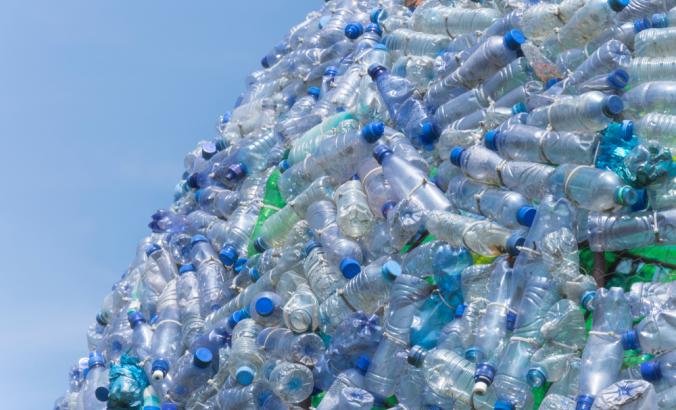This year’s resolution: Fix the broken plastic material system

As we enter a new decade, plastic pollution is one of the few issues that nearly everyone can get behind. "Single-use" was "Word of the Year” in 2018; hundreds of cities and countries introduced various plastic bans; and people from all corners of the planet have found a common enemy in straws.
Plastic pollution is also at the top of corporate sustainability agendas, as we’re seeing more companies make sweeping commitments to reduce their waste footprint and even band together with competitors to invest in solutions outside of their supply chains.
This encouraging momentum continues to grow into the new decade, but we still have much more work to do in order to fix the global plastic system.
Going into 2020, our resolution should be to strengthen the foundation for systems change so that we’re clearing the way for all these efforts to result in meaningful progress. Here’s what we need to be successful:As the demand for recycled materials grows, companies are increasingly willing to pay a premium for high-quality recycled material.
1. Data-driven decision making
Strategic and transformative action requires information. Having the most accurate, precise and comprehensive understanding of the scope and scale of the plastic pollution crisis — with real numbers attached — will clarify what the issues are, where they exist and how we need to fix them.
Right now this information simply isn’t out there, but many groups are working to fix that. As we fill this data gap, we need to make sure that we’re even asking the right questions, then standardize our systems for data collection and analysis so that we have a common language.
For companies, we need data on how and where waste flows throughout their supply chains and what this resonating impact is locally and globally. Also, without the right data, we don’t have metrics — and metrics are the only way companies adequately can measure and be held accountable for their actions on plastic waste.
2. Bringing innovation to market, but not at the cost of the environment
We need big ideas in order to see big results, and innovation will be the driving force towards realizing a circular future. We can’t do this without considering other costs to the environment, though.
One exciting consumer-facing change we’re seeing is the move from throwaway items to reusable delivery systems. Taking shape in our everyday life — from to-go coffee cups to make-up products — reusable models present huge opportunities to transform food service, personal health and home care industries, among others.
Bringing this to market will be a game changer, but we must get the technology right before we reach that point. The design and functionality of these systems must bake sustainability in from the get-go, so we’re not inadvertently causing trade-offs to the climate, forests and freshwater, and other parts of the earth system.
Chemical recycling is another emerging technology that will further develop this year. As a complement to mechanical recycling, it has the potential to drastically increase the capacity for recycling low-quality plastic. Its sustainability, however, will depend on the energy and greenhouse gas (GHG) emission savings over alternative options, as well as its ability to complement and work in combination with and working as a complement to mechanical recycling and other waste management reduction strategies.The design and functionality of reuse systems must bake sustainability in from the get-go, so we’re not inadvertently causing trade-offs to the climate.
3. Streamlining standards
Just as we’ve seen happen with paper products and the food we eat, we need public-facing standards to become the norm for plastic waste.
Standards ensure that the sustainable practices companies take are credible and raise the bar for the industry to follow. While they’re not the only answer, standards create the transparency and market incentive we need for systems change.
A few robust methods are out there, such as theRSB Standardfor bio-based materials, but we still need to standardize sustainable sourcing, social safeguards and labeling. Today, as investment flows into projects aimed at solving the plastic waste crisis all over the world, we need to prioritize developing a standardized approach to both managing risk and realizing results on the ground.
4. Elevating the role of waste management
Roughly 91 percent of plastic waste isn’t recycled. As the linchpin between collection and recovery, waste management providers are uniquely positioned to help fix this broken part of the plastic system. However, there largely aren’t financial mechanisms in place to incentivize the active recovery and recycling of plastic materials.
But as the demand for recycled materials grows, companies are increasingly willing to pay a premium for high-quality recycled material. Additionally, new international efforts banning the imports of plastic waste are requiring countries, as we’ve seen in the United States, to turn inward and improve recycling infrastructure.
这些力量正在创造空间浪费法力gement to step up. And we need both providers and the municipalities or communities they work with to seize these opportunities and create incentives that will improve infrastructure and bolster the market for and innovation around recovery and recycling.
